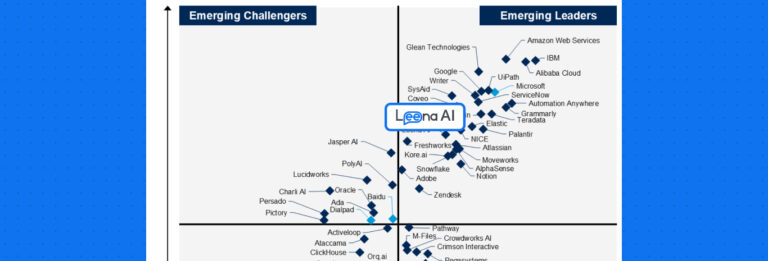Money is no longer the ultimate incentive for good work. It is the experience rather that matters the most to employees. But HRs alone can not do all the heavy lifting to transform employee experiences, considering the rapidly evolving expectations of the dynamic workforce.
HRs feel overwhelmed and bogged down with manual and tedious processes. However, there is a simple way out to help HRs serve employees better: employee self-service portals.
A digital employee experience platform has become a core to an organization’s employee experience strategy. A self-service portal empowers employees to track and manage their tasks, queries, and concerns without any assistance from HRs. Whether it is around professional records, salary, or leave-related queries, self-service portals provide employees quick and easy access to all the information, thereby reducing HRs’ workload significantly.
Read through this blog to understand the features and benefits of self-service portals and how they assist HRs in redefining employee experiences.
What is an employee self-service portal?
Employee self-service portals (ESS) are one of the core parts of modern Human Resource Information System (HRIS) software. An ESS portal is a web-based tool through which employees can access relevant information and make specific transactions from a central and online gateway.
An employee self-service portal enables employees to view, update, and access their personal information, such as payslips, and announcements from the leadership, and leave HR folks hassle-free. They have been proven a breakthrough in enhancing employee experiences.
How do employee self-service portals work?
ESS portals are centralized tools that help employees resolve their queries faster without assistance from HRs. ESS portals load off HRs from administrative tasks to let them focus on strategic pursuits of business growth.
For instance, if an employee wants to update their salary account details, they can directly go to the ESS portal and update their details there. Considering that the employee self-service portal is integrated with HRIS, the new details start to reflect in the record within minutes.
What functions do employee self-service portals support?
An employee self-service portal is efficient if it supports the core HR functions. Otherwise, the very purpose of ESS portals remains incomplete.
Below are some of the capabilities that digital employee experience platforms should support seamlessly.
Employee onboarding
Employee experience does not exclude the beginning of an employee’s lifecycle. Precisely why employee self-service portals include employee onboarding processes as one of the most crucial elements.
Virtual onboarding has become a growing trend for seamless candidate-to-employee transition. With a strong web-based and centralized employee onboarding program, HRs can eliminate paperwork and help new hires acclimatize seamlessly to their new job role. The employee self-service portals cater to the virtual networks of new hires, automatically generate employee passes, assign parking spaces, and assist them in evaluating and choosing employee benefits.
Corporate knowledge base
The self-service portals act as a standard knowledge base for the whole organization. They have an open and interconnected structure that allows the free flow of information among everyone in the organization.
Security
Another capability of a robust employee self-service portal is its security measures. Integrating adequate security features into your ESS portal should be your utmost priority. A secure self-service portal:
- maintains the confidentiality of electronically-stored sensitive information such as payroll and benefits data
- prevents loss and leakage of employee data
- prevents cyber crimes like identity theft
- prevents unauthorized updating of critical data such as employee reviews, stocks, etc.
Central employee helpdesk
An ESS portal acts as a central helpdesk to track, record, and resolve employee grievances by triaging the issues to concerned departments. The self-service portal let employees raise tickets with just a few clicks and help keep track of their query resolution status in real-time.
Compensation and benefits
In most companies, benefits enrollment of new employees and an annual enrollment of all the workforce are one of the most time-consuming responsibilities of the HR department. Having an employee self-service portal with open enrollment features can empower your employees to make their selections and calculations based on the options provided by the organization. For a better experience, organizations can even integrate the ESS portal with payroll, HRIS, and benefits software to streamline operations and make the process more efficient.
Employee relations management
ESS portals should track and maintain employee relations thoroughly. It should facilitate employees to connect, interact and communicate with their colleagues globally. Employee self-service platforms provide streamlined communication throughout the workforce building synergy among teams and increasing productivity.
Time and Attendance
One of the vital features of a self-service portal is its ability to track and record working hours, attendance, and leaves of employees. Clock systems enable web-based attendance data collection through employee self-service portals. It displays time and attendance data in real-time by allowing employees to log in and out from anywhere. Instead of the time-consuming process of extracting data, it constantly sends alerts to the management of overtime or changes in attendance routine.
How do self-service portals increase employee satisfaction?
The employee self-service portal offers innumerable benefits for both HRs and employees. Due to its convenience, it increases the efficiency of HRs and enables them to be available for more strategic HR involvement. On the other hand, employees feel productive, engaged, and content with the instant responses they receive to their queries.
This section lists the benefits of ESS portals for both HRs and employees to showcase how ESS tools are critical for the ongoing effectiveness of the organization.
Benefits of Employee self-service portal for HRs:
Improves HR functionality
ESS portals save the HR department a lot of time by eliminating manual work. HRs do not have to deal with policy-related queries, onboarding paperwork, and manual document management. As a result, the HR department is less overwhelmed and more productive in delivering a seamless employee experience.
Simplifies talent management
Employee self-service portals create a more integrated approach to talent management and meaningful workforce reports. The portal reduces errors in generating people management reports that combine all aspects, such as recruiting, performance management, and learning management.
For example, HR professionals can create a workforce report by measuring how many employees during their onboarding process reached their high potential. Apart from that, by following the virtual training development programs conducted through ESS portals, HRs can determine how well the managers perform.
Reduces HR workload
HRs are often overwhelmed due to administering every small and substantial issue of the entire workforce. However, with an efficient self-service system, they do not need to put their efforts into tasks like updating information, resolving basic payroll queries, managing leaves, etc. It significantly reduces their workload and boosts productivity.
Accelerates recruitment and onboarding
The employee self-service portals run processes digitally, such as employee recruitment and onboarding, to make them seamless and hassle-free. It helps HR professionals manage bulk hirings smoothly without any chances of mishaps.
Minimizes costs
With a centralized employee self-service portal, HR departments can cut down on the cost of resources and the manhours utilized for onboarding, offboarding, training, etc. As all the processes are performed automatically through such portals, the HR expenses and time incurred on everyday tasks reduce significantly.
Ascertains compliance
There is a high chance that an overworked HR department can quickly become dysfunctional or just operations-oriented. However, with the self-service portals, employees are bound to abide by the company guidelines. Besides, shorter waiting times, quick resolutions, and 24X7 access to the resources help the company tremendously in ensuring compliance requirements.
Provides accurate analytics report
When the HR department generates reports manually, the chances of errors are much higher. With automatic algorithms in place, ESS portals generate accurate analytics reports encompassing information such as employee performance, engagement trends, employee needs, etc. Given this, organizations can take more effective measures to make the workplace better for everyone. It also helps in creating strategies to boost employee productivity and morale.
Benefits of Employee self-service portal for employees:
Improves efficiency
Better employee experience relies on how efficiently an employee can go through their day-to-day tasks and access everything they need. An ESS portal ensures that employees have the opportunity to invest their time in the right places, thereby increasing productivity.
Keeps information up-to-date
ESS portals have liberated HRs from updating employee details manually in the database. Employees now access the self-service portal to update their information in a blink of an eye. It keeps the information updated and also ensures better experiences.
Boosts transparency
Transparency in the workplace builds trust. With the help of employee self-service portals, workers can access company policies, tax returns, salary slips, safety measures, and insurance documents at their fingertips. The portal automatically communicates any important announcement via internal notifications. This way, employees feel included and motivated to work more dedicatedly in the organization.
Boosts employee morale
The employee self-service portals are user-friendly. They do not take much time to be operated on and do not overwhelm your employees. When the workforce becomes self-reliant, it boosts their morale and acts as an incentive to go the extra mile.
Ensures accessibility – anytime, anywhere
With changing times, workplaces globally are adapting to remote or hybrid work. Employee self-service portals are of absolute necessity in such cases. Through such employee experience systems, workers can access their information from anywhere. Besides, these portals boost teamwork and foster seamless collaboration among employees.
Enhances employee engagement
Through building a culture of open teamwork, ESS platforms can change the face of employee engagement. Employees are just a few clicks away from virtually participating in meetings, workshops, seminars, training, and celebrations. They feel included and appreciated through various activities conducted via employee self-service portals.
Leverage the Leena AI platform to improve employee self-service
While employee self-service portals are becoming inherent to level up the game of employee experience, the key to success relies on the perfect blend of self-service options with human support. With the right HR technology, HR management thrives and takes employee experience to another league.
Leena AI’s conversational AI-powered virtual assistant is the modern version of an employee self-service portal. It offers a simple chat-like interface and integrates with any communication channel seamlessly. It can also be accessed via a mobile app and comes in handy for the frontline workers. Besides being an efficient self-service platform, it automates almost all your HR workflows and helps you assess employee engagement via regular pulse surveys.
Organizations using Leena AI’s EX suite of solutions have experienced a reduction in resolution time by 40% and 60% automation in resolving employee queries. Read the case studies to see how the platform has helped HRs boost their productivity by leaps and bounds.
Leena AI comes equipped with a centralized dashboard that gives HR leaders a comprehensive view of the key metrics to improve employee experience and HRs’ productivity. The dashboard also offers real-time insights into onboarding, offboarding, and engagement activities to help leaders take corrective measures on time.
If you want to learn more about our virtual assistant’s capabilities and how it can help your organization transform employee experience, book a demo now! Our experts will get in touch with you immediately.







